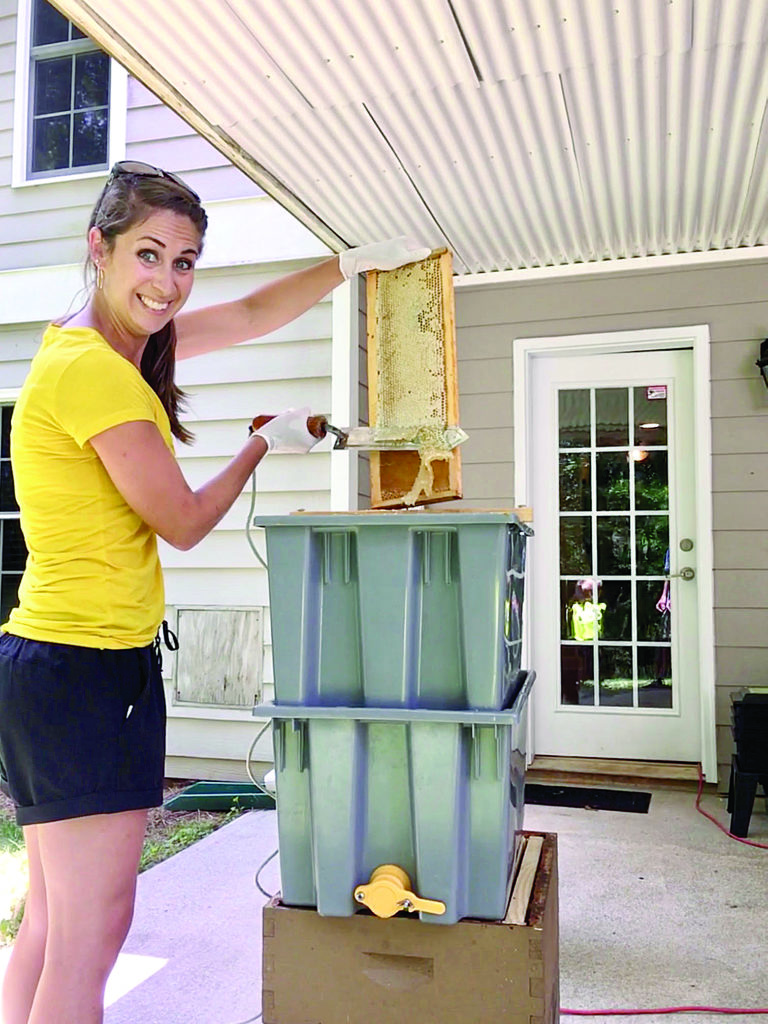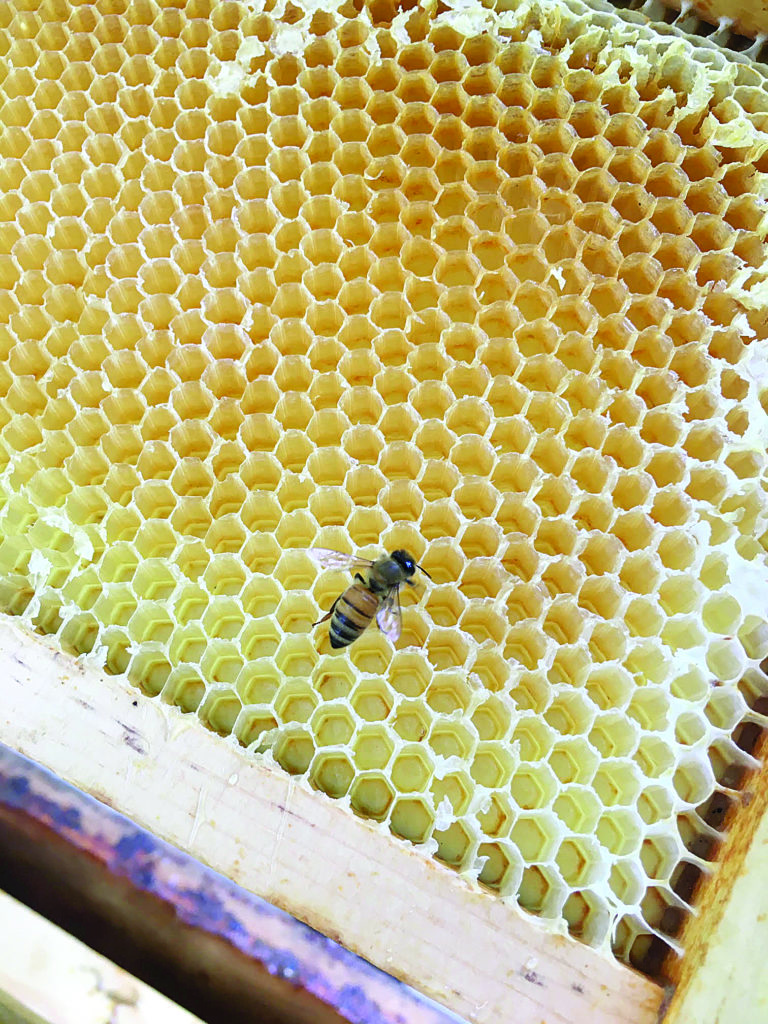It all started when we noticed honey bees always hanging out at the edge of the pool, sipping the pool water puddles. After a summer of swatting and shooing, I decided to investigate which lead to the sweetest task I’ve ever done, harvesting honey.
Local honey is always a sought after gem when the pollen counts reach an all time high in the spring and fall. I am lucky enough to have the pollinators living in my own neighborhood, eight hives to be exact. Collins Creek Honey is made, harvested and bottled in my own neighborhood. Dave and Cindy Collins are proud members of the Beekeepers Club of Gwinnett County.

My neighbors offered to take me along for an agricultural tour and work day while they harvested their summer batch of honey. They were kind enough to suit up and go in to commandeer the honeycomb frames from the feisty insects (for my protection of course)… but I do wish I had gotten a chance to take a bee helmet selfie. They started early in the morning before the bees got riled up with the heat of the day (check them out here, or head over to our website to view their play by play extraction). Then suggested I give them a few hours to settle the bees (they are angry for several hours buzzing about looking for their honeycombs).
Before we started, I got a fascinating lesson on the bee’s hierarchy, worker bee jobs and how a queen comes to be (no pun intended). Here are the notable facts:
1- When a queen bee lays eggs, the certain worker bees feed an egg “royal jelly” from their head to turn that egg into a queen. So weird!
2- Male bees have ONE job, to mate with a queen bee from another hive in the sky then go find a place to die. Poor guys!
3- Bees have two stomachs, and the enzymes in their honey stomach break down the pollen. The honey is actually regurgitated from bee to bee into the hive. Gross!
4- The winter is survival of the fittest for the colony. About 30% of a colony will die in the winter.
Dave pulled out the PERFECT honeycomb tray filled with honey and covered with bees wax. Seriously, the honeycomb hexagons are perfectly symmetrical. He told me we had to move quickly because the bees, even though they are over 100 yards away, can smell their food and come to forge. Then he handed me a giant hot metal knife the size of a machete, called a wax cutter, to slice through the wax cappings on the honeycomb. In a slow zig zag pattern, I used the electric knife to slice through the wax cappings of the honeycomb chambers to release the sweetness.

Once uncapped, the honey must be extracted from the cells in the honeycomb frame. The quickest way to do this is through centrifugal force in a (creatively named) “honey extractor,” which is a large pot like container with a grid on the inside attached to a rotation arm that spins the trays, splattering the sticky honey to the walls and then dripping down the sides to the bottom of the pot. I must say, it was a little bit of a workout but a rewarding task seeing the pot fill up with the liquid gold. (You can catch a full demo of Dave Collins extracting here)
The honey is then filtered to remove any wax residue from the honeycomb, any bee parts (yes sometimes a deceased bee will lose a leg and it ends up in the honey pots) and any other debris. The Collins said the most time consuming part of the honey harvesting process is the bottling and labeling. Unfortunately, I did not get to try my hand at using the pour spout and bottling the honey, which I am sure is a sticky task.
I headed home from my “buzzzy” afternoon with a whole new appreciation for our yellow and black friends who are VITAL to the planet’s existence (pollinators are our friends), and a goody bag of homemade, right from the hive honey. The honey will surely come in handy next time my allergies start acting up!

